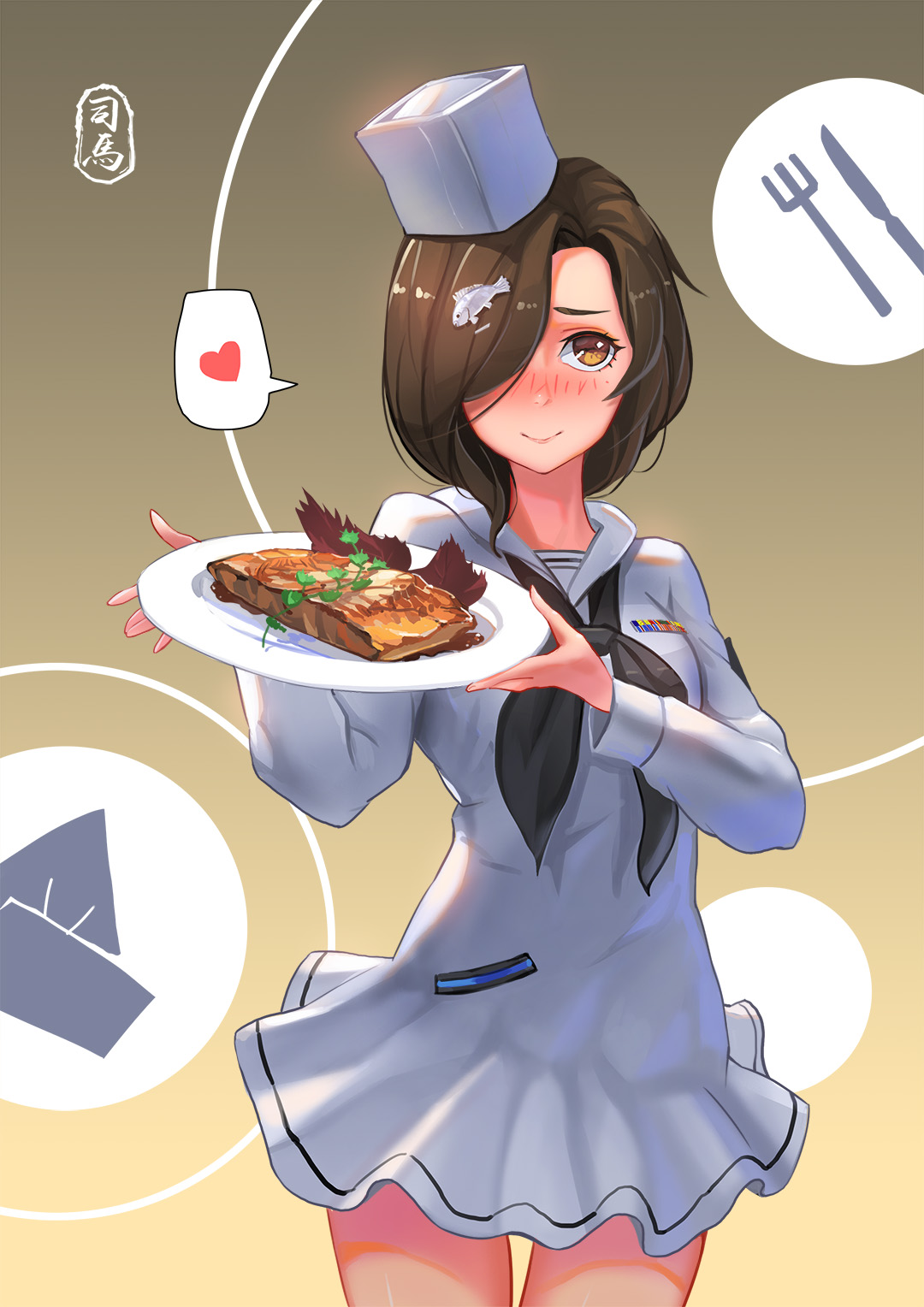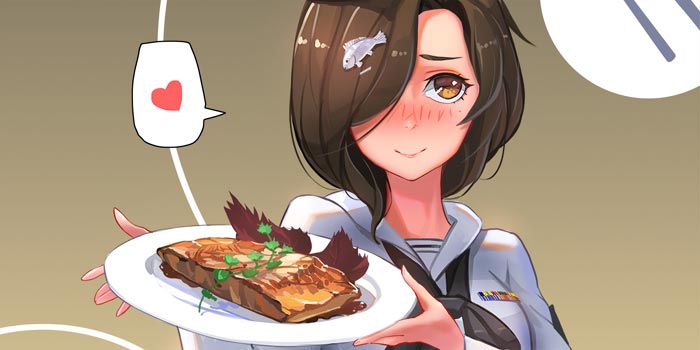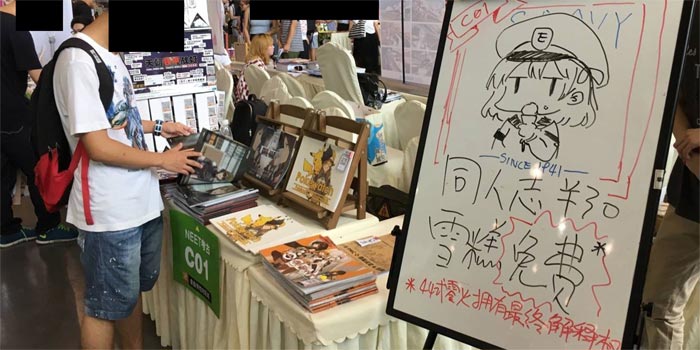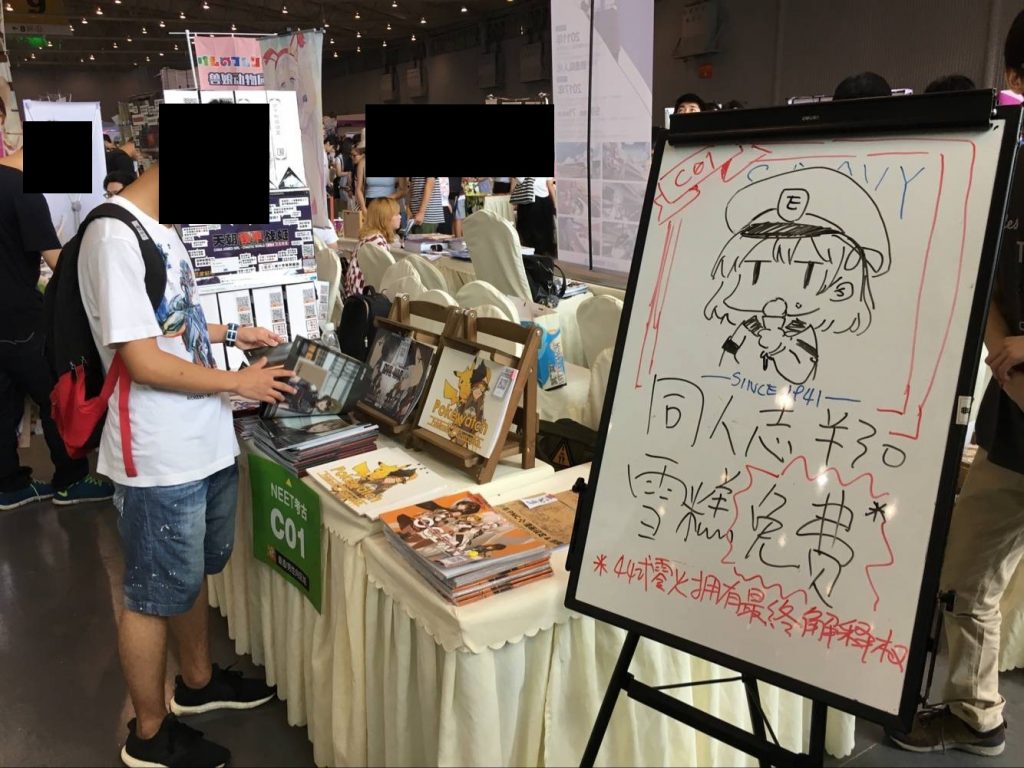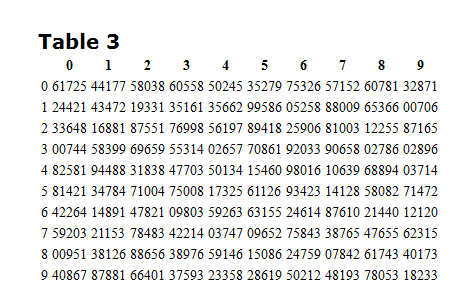Hello everyone! Tautog here. Since we just released that Navy Foods book (which, according to Zero, has a readership of like 90% female), I thought I’d write something on the subject too.
See, the Navy Foods book isn’t just a collection of U.S. Navy Cookbook recipes. It’s a way for our friends from across the ocean to understand America. Military food do tend to use the very same dishes in which you and I are familiar with, but what’s familiar to us is oftentimes alien and exotic to the folks over in Asia.
So, let’s begin, shall we?
Okay. I thought really hard about how to start this up and I think it’s best that we start from the beginning. Let’s be honest. In the K-boat and S-boat days, submarine food was universally bad. This is for a few reasons, but all of them can be boiled down to one thing.
Space.
The earliest submarines had no galley to cook from like the more modern fleet-types or even the (real) modern SSBNs. Adding something like a fridge (chillbox to you old-timey folks!) was considered to be a luxury. This was because at the time the Navy didn’t think the submarine should stay out for extended periods of time anyways. As such, there was no dedicated eating area (you ate where you slept), the food was bad, and there was virtually no variation in the menu. Hope you like hardtack and beef stew because that’s all you’re going to see for days on end!
If you’re lucky enough to have either!
Then as the Navy realized that they needed the submarine to stay out longer, things changed. Even in the early designs, food preparation became an important factor. Now there are proper galleys and storerooms and even a place for submariners to eat.
Food is important. We all like to eat. In a tough environment like the submarine, food becomes very important. Probably no other thing can help boost morale if you make something good for everyone to eat. And, doing research on this particular matter, I find it very illuminating that the things crew remember the most aren’t necessarily the adrenaline-rushed combat or the thrill of danger, but rather camaraderie, fellowship, and yup, you guessed it, the banter that happens during mealtime.
So, here are three recipes, straight from my head. I know I’m a fictional character and all, but these are based on actual recipes from veterans in Morgane’s family or other verified sources. A primary reference is of course, the U.S. Navy Cookbook. All of these have been produced in one way or another by Morgane herself, and I think they’re pretty good!
Tautog’s Tomato Sauce
You’re going to need:
About half a pound of tomatos. You can get this pre-pureed, or you can cut it up yourself and squish it into small chunks for use later.
1/2 cup of hot water
1 ounce of butter or other shortening.
half an onion
1 clove of garlic
A small amount of ordinary white flour (just enough to make the initial blend a little thick)Salt, sugar, cayenne pepper, black pepper, cloves and cinnamon, all ground up and in a pinch. Season to your tastes.
Okay. This one’s a simple one. It’s tomato sauce. You can use tomato sauce for everything from pizza to pasta to stews to meats. It’s super versatile and easy.
This recipe is easy too. What you’re gonna do is first, add all the salt, sugar, cayenne pepper, black pepper, cloves and cinnamon in water and mix it up.
Start off on medium heat (setting 5-7) and add your butter to the stove. Wait for it to melt. When it does, add onions and garlic. Turn to high heat (8+) and quickly saute for 2-5 minutes or whenever the onions are browned and you can smell the onion.
Now, take the flour, and add it in to thicken the greasy mix you see in the pot. This is where you add the tomatoes and water. Keep on stirring (you’re still on high heat) until the mixture starts to bubble (boiling), then reduce the heat to something like a 3-5, and stir constantly for 10-15 minutes. You’ll know it’s ready when the sauce reaches an even consistency.
You want a meaty version? Add ground beef to it and stew. You can’t really go wrong with good lean beef.
Now, beef tends to be the favorite meat of submariners. We’ve already covered the roast beef in the book, and that is the most popular form of cooking beef, bar none, on a submarine. It even beats out steak for a good reason – the steaks on a submarine is generally different from steaks on shore.
See, what makes steak delicious is the fat and the bone. When you cook it, the fat melts into the meat. It looks good and tastes good. In order to save space, when submariners get their steaks it is frequently trimmed of everything. Bones, fat, you name it. Badly frozen, spoiled, or freezer-burnt steaks are all part of life on a submarine, but the cooks quickly learned to adjust accordingly.
What else do submariners eat? Pork is very popular. Pork chops are always welcome, pork roasts are popular, and glazed or cured hams are a popular alternatives. Chicken is generally well-received. Turkey, too. Shrimp tends to be the only seafood due to (again) space, but it’s generally found in Egg Foo Youngs or pastas and not a main meal.
Now, what wasn’t common in a World War 2 submarine was fish. The U.S. supply system didn’t really carry it. It was hard to store properly. If cooked badly it had a fishy taste. That, and people just liked red meats a whole lot better.
Baked salmon was the exception to the norm. This one was well-liked by the crew, though it is generally served on shore or in port rather than underway. Here’s mine, again.
Tautog’s Baked Salmon Almondine
Two decently sized salmon (about as thick as two of your thumb nails, um… size of your hand from tip of middle finger to wrist?)
A handful of coriander or 1/4 teaspoon dried coriander.
At least 2 teaspoons of lemon juice.
1/2 cup of flour.
1/4 cup of almonds (we’ll explain what this is for later!)
1 egg, beaten.
Salt and pepper to taste.
Cooking spray or butter
Okay. This one’s actually going to be really easy. First of all, I don’t know how you get your salmon. If it’s with skin, just bake with the skin on the bottom. If it’s without skin (you don’t have to de-skin it if you don’t want to!) then read on.
Chop up the almonds into as small pieces as you’d like. What you’re going to do is first, lightly flour your salmon. Just the one side is going to be good enough if you have salmon with skin.
Then, take your salt/pepper mixture and sprinkle it all over the salmon.
Take a brush or pour the egg mixture onto your salmon. Generously add almonds. The almonds should “stick” to the fish and forming something like a coated layer. This is what we want.
Now, drizzle with lemon juice. Add coriander.
Heat oven to 400 degrees. Bake until crust hardens (depending the size of your oven).
If you don’t have an oven at home, no problems. Take a pan. Add butter or your favorite cooking oil. Put on high heat and toss the salmon in. It takes maybe 3-4 minutes for one side, and 2-3 minutes for the other. You’ll know when it’s cooked when it’s golden brown.
Now, I know you’re thinking. “Tautog! What about the Tautog! Could you bake a Tautog?”
The answer is no.
Tautog should be grilled. It is probably the best grilling fish you can get this side of the Pacific. Baking Tautog is kind of a waste of the fish, if you ask me.
So, how should you do it? Well. Here’s another one of mine. This isn’t a submarine recipe. More like a submarine base recipe. But, it’s delicious and it’s also pretty lazy!
Tautog’s Grilled Tautog
Tautog filet. IMPORTANT: LEAVE THE SKIN ON.
I repeat, leave the skin and the scale on. You’ll see why.
Tautog Marinade:
Olive oil, lemon, crushed garlic, crushed black pepper. You’re going to want enough olive oil to cover your tog (I sometimes just get a ziplock bag and fill it up and stick the fish in).
Okay. This is super easy and super simple. Notice there’s no salt in the marinade. That’s because you salt the fish after it comes out.
Toss your Tautog in the marinade. Let it sit in the fridge for a few hours. Then what you want to do in the meantime is to heat up a skillet or a wok. Use high heat.
(Yes, you don’t even need a grill for this one. Handy, isn’t it?)
Wait until your skillet is super hot. Add a tiny bit of oil to the bottom. Then, toss the Tautog in, scale-side down.
That’s it. Put the lid back on. Wait and watch the fish. The reason why we keep the scale and the skin is that the scale and skin will take the brunt of the heat, meaning that you don’t have to flip the fish or anything and you can just let the Tautog cook. If your fish is a whole fish, you probably want to flip it once. Other than that it’s exactly the same.
This doesn’t take too long. You’ll know it’s ready when the Tautog starts to “chip” as it “falls apart.” The exact time will depend on the thickness of your fish. Generally from my experience it takes anywhere from 3 to 15 minutes (Tautog are big fish!)
…You know, I’m hungry now. I’m gonna go look for food. See you next time!
